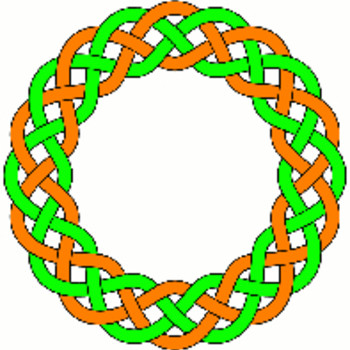Suppose the probability that it will rain tomorrow is 0.7. (a) What are the odds that it will rain tomorrow? (b) What are the odds that it will not rain tomorrow?
2 Answers
7 in 10 to rain, 3 in 10 to not rain.
Explanation:
The odds that it will rain tomorrow is given by the probability, so there is a 7 in 10 chance that it will rain.
The odds of it not raining are the other 3 in 10.
Odds that it will rain tomorrow
Odds that it will not rain tomorrow
(both to 3 places of decimals)
Explanation:
Amongst other things, this question is checking that you understand the difference between probability and odds, and that you can convert back and forth between them.
Denoting the number of positive outcomes in a series of
-
probability of a positive outcome (conventionally denoted by
p ):
p = a/n = a/(a+b) -
probability of a negative outcome (conventionally denoted sometimes by
q but often by(1 - p) ; after all, why use two variables when one is automatically defined by the other):
q = b/n = b/(a+b)
(As an aside, noting that
in keeping with the second convention)
-
odds of a positive outcome
= a/b -
odds of a negative outcome
= b/a
Noting
it may be concluded that
(for completeness, the inverse function may be found to show
note the different sign of the term in the denominator)
So, with regard to the probability that it will rain tomorrow, you are given
from which it might be noted
(to 3 decimal places)
To avoid messy decimals, this may be reported as
"the odds are 7 against 3";
(Bookmakers typically use odds rather than probabilities)
Compare this phraseology with that for the corresponding probability
"the probability is 7 in 10"
Denoting the probability that it will not rain tomorrow by
from which it might be noted that the odds that it will not rain tomorrow are
(or "3 against 7")
Note that this is the reciprocal of the odds that it will rain
(that is,
Compare this with the relationship between
which sum to
(that is
Why bother with having two different measures of the chance (probability and odds) that something will happen?
It is meaningful to talk about multiples of odds (eg "3 times the odds, where "3" is acting as an "odds multiplier") but it is not meaningful to talk about multiples of probability (eg consider the difficulty of interpreting the phrase "three times the probability" for some
Thus, it is possible to calculate "odds ratios", which feature in meaningful descriptions of "risk factors" for some particular outcome (eg often used in epidemiology in medicine).
There are even more measures of chance (with different definitions) that prove useful in other circumstances, such as likelihood (look out for those!).


